Peeping Tom (film)
9.2 /10 1 Votes
96% Rotten Tomatoes Director Michael Powell Initial DVD release November 16, 1999 Duration Language English | 7.8/10 IMDb 4/4 Roger Ebert Genre Drama, Horror, Thriller Budget 135,000 GBP Country United Kingdom | |||||||||||||||||||||||||||||||||
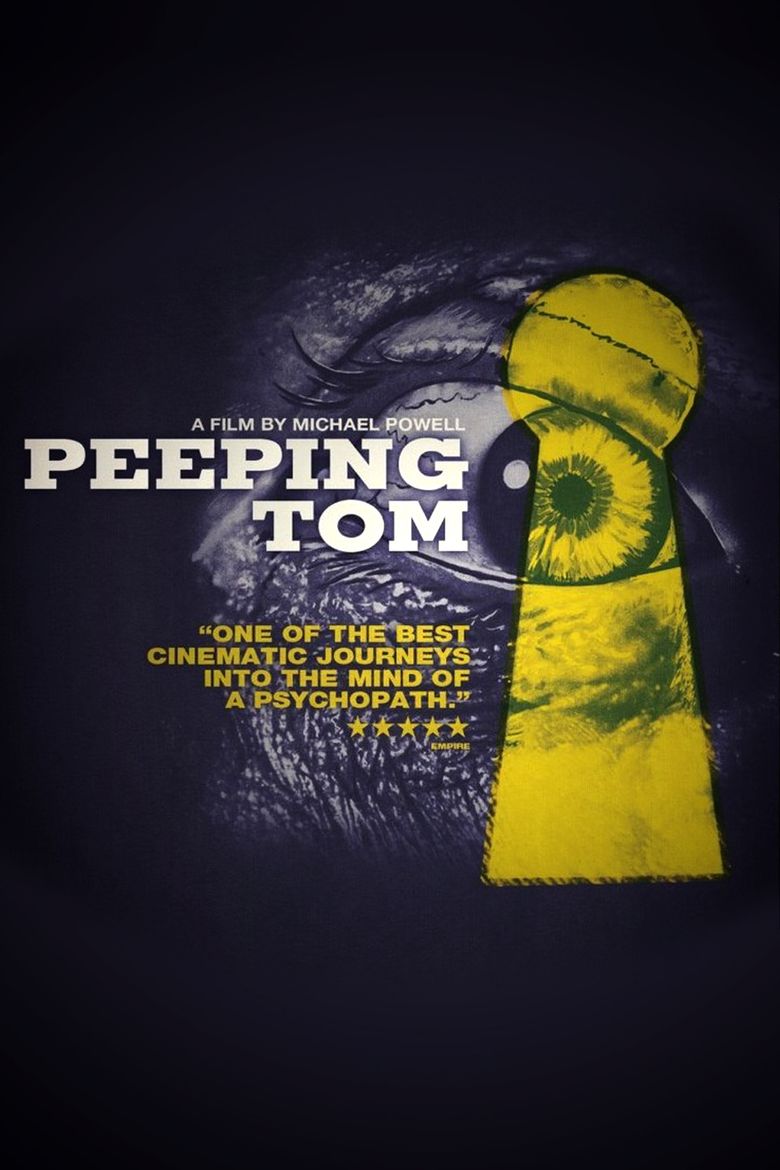 | ||||||||||||||||||||||||||||||||||
Release date 16 May 1960 (1960-05-16) (UK) Writer Leo Marks (original story), Leo Marks (screenplay) Cast Karlheinz Böhm (Mark Lewis), Moira Shearer (Vivian), Anna Massey (Helen Stephens), Maxine Audley (Mrs. Stephens), Brenda Bruce (Dora), Miles Malleson (Elderly Gentleman Customer)Similar movies Blow-Up , District 9 , Taxi Driver , The Secret Life of Walter Mitty , 13 Going On 30 , Amélie Tagline marked for death by Peeping Tom - To Look Meant Danger To Smile Meant Death! | ||||||||||||||||||||||||||||||||||
Peeping tom 1960 trailer
Peeping Tom is a 1960 British psychological thriller-horror film directed by Michael Powell and written by the World War II cryptographer and polymath Leo Marks. The title derives from the slang expression 'Peeping Tom' describing a voyeur. The film revolves around a serial killer who murders women while using a portable movie camera to record their dying expressions of terror.
Contents
- Peeping tom 1960 trailer
- Plot
- Cast
- Themes
- Production
- Release
- Reception
- Relationship with Hitchcocks films
- Home media
- Comparisons
- Censorship
- References
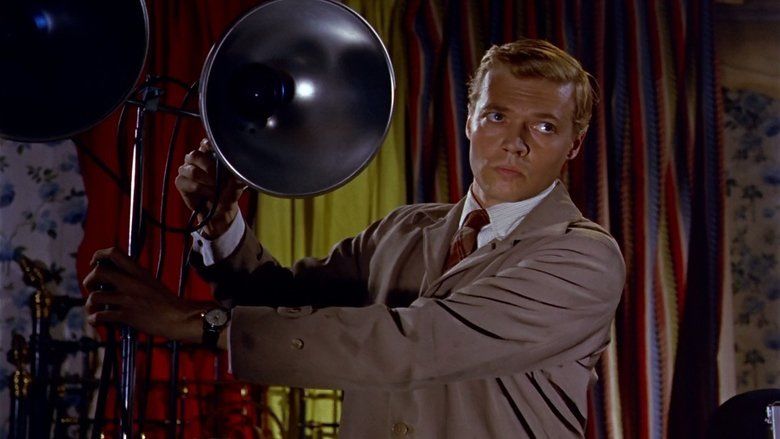
The film's controversial subject and the extremely harsh reception by critics effectively destroyed Powell's career as a director in the United Kingdom. However, it attracted a cult following, and in later years, it has been re-evaluated and is now widely considered a masterpiece. The first "slasher" film, the British Film Institute named it the 78th greatest British film of all time.
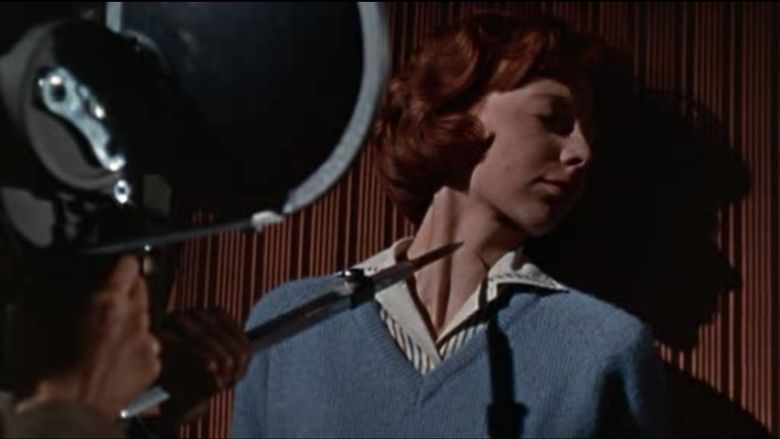
The music score, written by Brian Easdale, contains a challenging part for solo piano, which was played by the Australian virtuoso Gordon Watson.
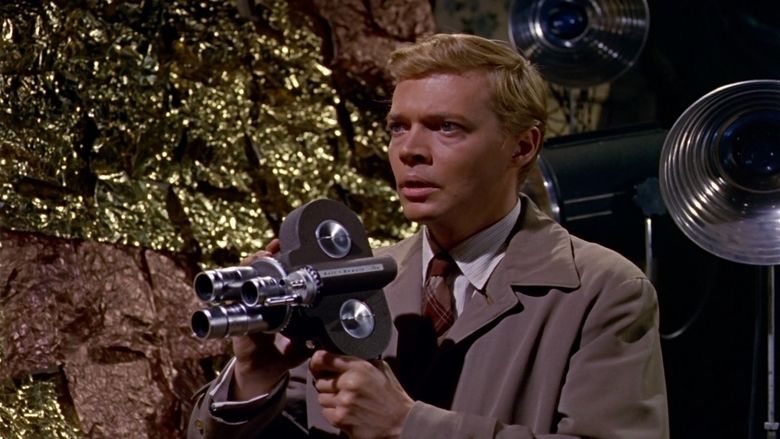
Plot
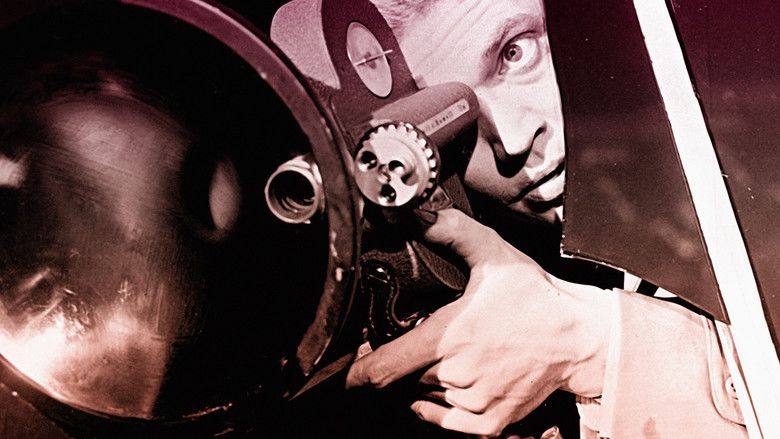
Mark Lewis meets Dora, a prostitute, covertly filming her with a camera hidden under his coat. Shown from the point of view of the camera viewfinder, tension builds as he follows the woman into her home, murders her and later watches the film in his den as the credits roll on the screen.
Lewis is a member of a film crew who aspires to become a filmmaker himself. He also works part-time photographing soft-porn pin-up pictures of women, sold under the counter. He is a shy, reclusive young man who hardly ever socialises outside of his workplace. He lives in the house of his late father, renting most of it via an agent, while posing as a tenant himself. Helen, a sweet-natured young woman who lives with her blind mother in the flat below his, befriends him out of curiosity after he has been discovered spying on her on her 21st birthday party.
Mark reveals to Helen through home movies taken by his father that, as a child, he was used as a guinea pig for his father's psychological experiments on fear and the nervous system. Mark's father would study his son's reaction to various stimuli, such as lizards he put on his bed and would film the boy in all sorts of situations, even going as far as recording his son's reactions as he sat with his mother on her deathbed. He kept his son under constant watch and even wired all the rooms so that he could spy on him. Mark's father's studies enhanced his reputation as a renowned psychologist.
Mark arranges with Vivian, a stand-in at the studio, to make a film after the set is closed; he then kills her and stuffs her into a prop trunk. The body is discovered later during shooting by a female cast member who has already antagonised the director by fainting for real at points, which are not in the script. The police link the two murders and notice that each victim died with a look of utter terror on her face. They interview everyone on the set, including Mark, who always keeps his camera running, claiming that he is making a documentary.
Helen goes out to dinner with Mark, even persuading him to leave his camera behind for once. Her blind mother finds his behaviour peculiar, aware, despite her blindness, how often Mark looks through Helen's window. Mrs. Stephens is waiting inside Mark's flat after his evening out with her daughter. Unable to wait until she leaves due to his compulsion, he begins screening his latest snuff film with her still in the room. She senses how emotionally disturbed he is and threatens to move, but Mark reassures her that he will never photograph or film Helen.
A psychiatrist is called to the set to console the upset star of the movie. He chats with Mark and is familiar with Mark's father's work. The psychiatrist relates the details of the conversation to the police, noting that Mark has "his father's eyes." Mark is tailed by the police who follow him to the newsagents where he takes photographs of the pin-up model Milly (two versions of this scene were shot; the more risqué version is credited as being the first female nude scene in a major British feature, although even on the racier version, Milly only exposes one breast for a few seconds). Slightly later, it emerges that Mark must have killed Milly before returning home.
Helen, who is curious about Mark's films, finally runs one of them. She becomes visibly upset and then frightened when he catches her. Mark reveals that he makes the movies so that he can capture the fear of his victims. He has mounted a round mirror atop his camera, so that he can capture the reactions of his victims as they see their impending deaths. He points the tripod's knife towards Helen's throat, but refuses to kill her.
The police arrive and Mark realises he is cornered. As he had planned from the very beginning, he impales himself on the knife with the camera running, providing the finale for his documentary. The last shot shows Helen crying over Mark's dead body as the police enter the room.
Cast
Themes
Peeping Tom has been praised for its psychological complexity. On the surface, the film is about the Freudian relationships between the protagonist and, respectively, his father, and his victims. However, several critics argue that the film is as much about the voyeurism of the audience as they watch the protagonist's actions. Roger Ebert, in his review of the film, states that "The movies make us into voyeurs. We sit in the dark, watching other people's lives. It is the bargain the cinema strikes with us, although most films are too well-behaved to mention it." In this reading, Lewis is an allegory of the director of a horror film. In horror movies, the directors kill victims, often innocents, to provoke responses from the audiences and to manipulate their responses. Lewis records the deaths of his victims with his camera and by using the mirror and showing each of his victims their last moments, provokes their own fear even as he kills them.
Martin Scorsese, who has long been an admirer of Powell's works, has stated that this film, along with Federico Fellini's 8½, contains all that can be said about directing:
According to Paul Wells, the film deals with the anxieties of British culture in regarding sexual repression, patriarchal obsession, voyeuristic pleasure and perverse violence. The impossible task in the film is the quest to photograph fear itself.
In the opinion of Peter Keough, the death scenes of the film would provide a field day to Freudian psychoanalysis and deconstructionists. Cinema here is equated to sexual aggression and death wish, the camera to the phallus, photography to violation, and film to ritualized voyeurism. The emphasis of the film lies on morbidity, not on eroticism. In a memorable sequence, an attractive, semi-nude female character turns to the camera and reveals a disfiguring facial scar. This peeping tom is turned on not by naked bodies, but naked fear. And as Mark laments, whatever he photographs is lost to him. Mark is a loner whose only, constant companion is his film camera. He is also the victim of his father's studies in the phenomenon of fear in children, a human guinea pig subjected to sadistic experiments. His love interest Helen has her own fascination with a morbid gaze. She is a children's writer whose book concerns a magic camera and what it photographs.
Production
The film was financed by Nat Cohen at Anglo-Amalgamated with other funds from the National Film Finance Corporation. Cohen originally wanted a star to play the lead role and suggested Dirk Bogarde but the Rank Film Organisation, who had him under contract, refused to loan him out. Laurence Harvey was attached for a while but pulled out during pre-production and Powell ended up casting Karl Boehm. Filming took six weeks beginning in October 1959.
Release
In the United Kingdom, it was released by Anglo-Amalgamated. It is often considered part of a Sadean trilogy with Horrors of the Black Museum (1959) and Circus of Horrors (1960). The three films had different production companies but the same distributor. They are connected through their themes of voyeurism, disfigurement, and sadistic figures. Anglo-Amalgamated films were typically released in the United States by American International Pictures through a deal between the two companies. But AIP was not interested in releasing Peeping Tom, apparently skeptical of its ability to satisfy audiences.
In the United States, the film was released by importer and distributor Astor Pictures in 1962. It was released simultaneously to the markets for genre horror films, art films, and exploitation films. It failed to find an audience and was one of the least successful releases by Astor. The film received a B rating from the National Legion of Decency, signifying "morally objectionable in part" content. The organization identified voyeurism and sadism as key elements of the film in its rating.
Reception
Peeping Tom was an immensely controversial film on initial release and the critical backlash heaped on the film was a major factor in finishing Powell's career as a director in the UK. British reviews tended towards the hyperbolic in negativity. Derek Hill, reviewer of the Tribune suggested that the film should be disposed of, thrown into a sewer. Yet, in his view, its stench would remain. Len Mosley writing for the Daily Express claimed that the film is more nauseating and depressing than the leper colonies of East Pakistan, the back streets of Bombay, and the gutters of Calcutta. It was banned in Finland until 1981. However, the film earned a cult following, and since the 1970s has received a critical reappraisal. Powell noted ruefully in his autobiography, "I make a film that nobody wants to see and then, thirty years later, everybody has either seen it or wants to see it."
An account of the film's steady reappraisal can be found in Scorsese on Scorsese, edited by Ian Christie and David Thompson. Martin Scorsese mentions that he first heard of the film as a film student in the early 1960s, when Peeping Tom opened in only one theatre in Alphabet City, which, Scorsese notes, was a seedy district of New York. The film was released in a cut black-and-white print but immediately became a cult fascination among Scorsese's generation. Scorsese states that the film, in this mutilated form, influenced Jim McBride's David Holzman's Diary. Scorsese himself first saw the film in 1970 through a friend who owned an uncut 35mm colour print. In 1978, Scorsese was approached by a New York distributor, Corinth Films, which asked for $5,000 for a wider re-release. Scorsese gladly complied with their request, which allowed the film to reach a wider audience than its initial cult following.
Today, the film is considered a masterpiece and one of the best British horror films. In 2004, the magazine Total Film named Peeping Tom the 24th greatest British movie of all time, and in 2005, the same magazine listed it as the 18th greatest horror film of all time. The film contains the 38th of Bravo Channel's 100 Scariest Movie Moments. Roger Ebert has included it in his 'Great Movies' column.
Film aggregate Rotten Tomatoes has awarded the film a 96% rating, based on 46 reviews and an average score of 8.6/10. The site's consensus is: "Peeping Tom is a chilling, methodical look at the psychology of a killer, and a classic work of voyeuristic cinema."
Relationship with Hitchcock's films
The themes of voyeurism in Peeping Tom are also explored in several films by Alfred Hitchcock. In his book on Hitchcock's 1958 film Vertigo, Charles Barr points out that the film's title sequence and several shots seem to have inspired moments in Peeping Tom.
Chris Rodley's documentary A Very British Psycho (1997) draws comparisons between Peeping Tom and Hitchcock's Psycho; the latter film was given its New York premiere in June 1960, two months after Peeping Tom's premiere in London. Both films feature as protagonists atypically mild-mannered serial killers who are obsessed with their parents. However, despite containing material similar to Peeping Tom, Psycho became a box-office success and only increased the popularity and fame of its director (although the film was widely criticized in the English press). One reason suggested in the documentary is that Hitchcock, seeing the negative press reaction to Peeping Tom, decided to release Psycho without a press screening.
In his early career, Powell worked as a stills photographer and in other positions on Hitchcock's films, and the two were friends throughout their careers. A variant of Peeping Tom's main conceit, The Blind Man, was one of Hitchcock's unproduced films around this time. Here, a blind pianist receives the eyes of a murder victim, but their retinas retain the image of the murder.
According to Isabelle McNeill, the film fits well within the slasher film subgenre, which was influenced by Psycho. She lists a number of elements which it shares with both Psycho and the genre in general:
She finds that the film actually goes further than Psycho into slasher territory through introducing a series of female victims, and with Helen Stephens functioning as the bright and sympathetic final girl.
Coincidentally or not, Anna Massey played important roles in both Peeping Tom and Hitchcock's Frenzy (1972). In the former her Helen character was Lewis's almost-normal love interest, who almost brought redemption to him. Helen herself was working on a photography-themed children's book, and for a while it looked like helping her on this project might divert Lewis from his own perverse documentary film. In Frenzy, which is unusual for later Hitchcock in its working-class London street settings, Miss Massey plays a barmaid, Babs Milligan, sympathetic to the main suspect, Richard Blaney (played by Jon Finch), who had worked with her. Blaney is abetted by Babs in his eluding the police, and they have sex while on the run, but she herself is murdered before they can get Blaney cleared. Significantly, the Frenzy murderer, Robert Rusk (Barry Foster), might have been be able to perform sexually only while enjoying the "lovely, lovely" look of terror on his victims' faces while he was strangling them. Much of Lewis's project in Peeping Tom was to capture fully the face of fear on his victims, which he provoked by coming closer and closer, with handheld camera rolling, and revealing that he was about to kill them with a sharpened tripod leg. To enhance their terror, he had a mirror mounted on the camera so that they too could see their own fear, just as he stabbed them in the neck with the tripod. (This seemed almost to sexually excite and sate him, though he did not penetrate them beyond this symbolic act.)
Home media
Peeping Tom has received releases on DVD by the following different distributors:
Released with just the film and a photo gallery.
Includes the Channel Four documentary A Very British Psycho and a commentary by Laura Mulvey
6 DVD boxed set of I Know Where I'm Going!, A Canterbury Tale and Peeping Tom
The Peeping Tom double disk set includes:
(In English with French subtitles); 12 min
(In French with English subtitles); 20 min
(In English with French subtitles); 51 min
An interview by the French director Gaspar Noé
(In French with English subtitles); 14 min
An interview by the French Director Gaspar Noé
(In French with English subtitles); 2 min
A special edition as another of their Studio Canal re-releases, which include the 2006 special edition of Don't Look Now. It was released on 26 March 2007.
Details follow:
Optimum Releasing '50th Anniversary' Blu-ray disc was released on 22 November 2010
Comparisons
Comparisons have been made between Peeping Tom and other significant films in this genre such as:
Censorship
When Peeping Tom was first released in Italy in 1960 the Committee for the Theatrical Review of the Italian Ministry of Cultural Heritage and Activities rated it as VM16: not suitable for children under 16. The reason for the age restriction, cited in the official documents, is: the storyline is shocking and several scenes are not suitable for minors. In order for the film to be screened publicly, the Committee imposed the removal of the following scenes: 1) two scenes taking place in the photographer’s studio, in particular those in which Milly is shown alone, fully dressed and half-undressed, in front of the mirror because she is indecent; 2) two other scenes showing a woman lying on the bed excessively half-undressed, because she is indecent. The official document number is: 32987, it was signed on 21 October 1960 by Minister Renzo Helfer.
References
Peeping Tom (film) WikipediaPeeping Tom (film) IMDbPeeping Tom (film) Rotten TomatoesPeeping Tom (film) Roger EbertPeeping Tom (film) themoviedb.org
